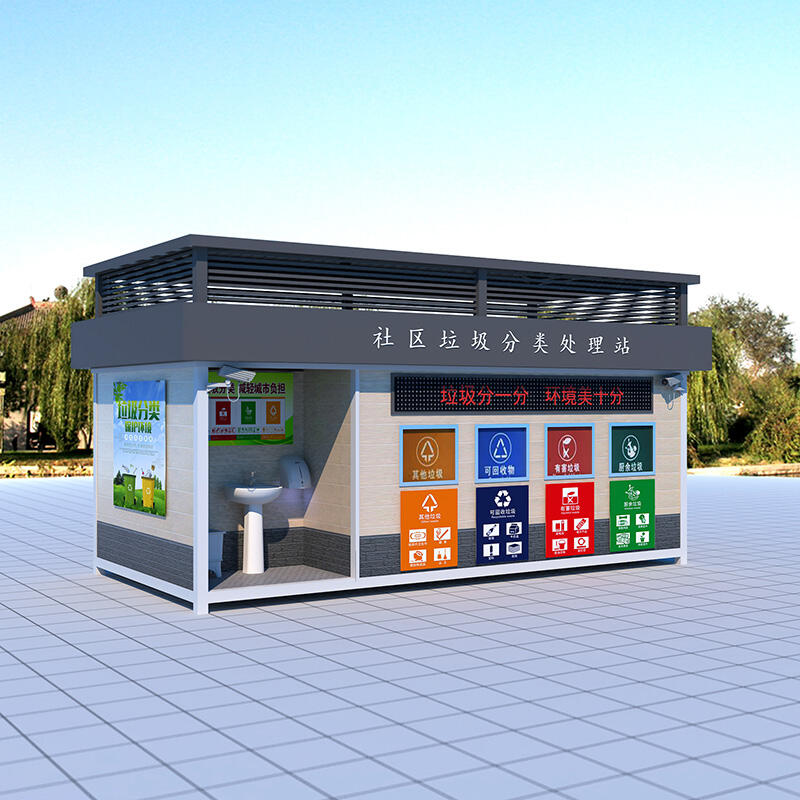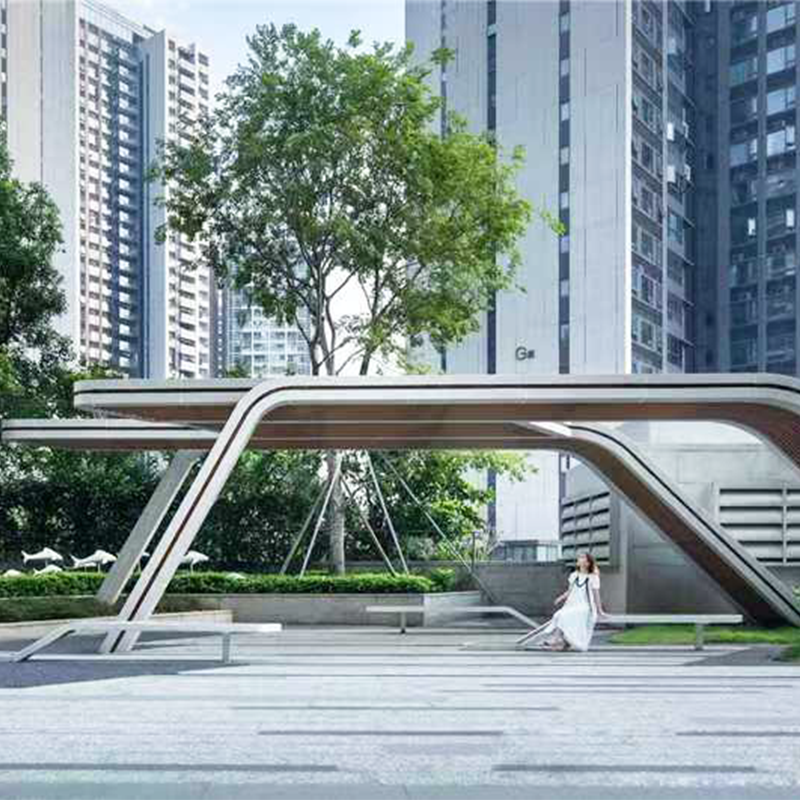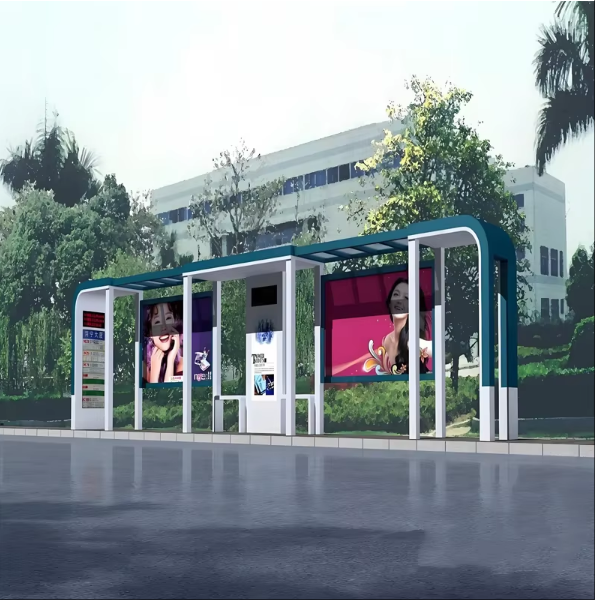Реклам тэмдэгтүүдийн үйлдвэрлэлийн шинэ технологи
Агитпропын тэмдэгтүүдийн хөрвүүлэх ур чадвар нь эргэн тогтнох үед хамгийн их өөрчлөлтийг тодорхойлсон байна. Эхлээд тэмдэгтүүдийг зохион байгуулах үндсэн арга болсон, энэ нь үзэсгэлэнчид ямар ч элементийг хамгийн их үнэтэйгөөр зохион байгуулж байсан юм. Технологийн шинэчлэлтээр дижитал түрээсүүд нь ажлын процессыг хамгийн их үнэтэй болгоход оролцож байгаа. Иймд үйлдвэрлэлийн хурд, хямд, маш олон талт байдлыг өссөнөөр компанийн аж ахуйн нэгжүүдийн хувьд ашигтай болон зарим үеийн хөдөлгөөнд хариуцаж чадах боломжийг олгодог. Энэ нь зохион байгуулалтын агитпропын тэмдэгтүүдийг зөвхөн хурдан, маш их тооны үйлдвэрлэлийн доор хөгжүүлэх боломжийг олгодог.
Технологийн нэг өргөтгөл бол санамсаргүй бичиг баримтын байгууллагын дотоод CAD (Компьютерийн тусламжтай зургийн хөгжүүлэлт) ашиглах юм. CAD зураачид зургийг үүсгэх, өөрчилөх, шинжлэх, ихээр зөв байдлыг хялбархан хийх боломжийг олгодог, ихэнх тохиолдолд тодорхой хэмжээний үндэслэлээр ажилладаг болон эрчимтэй байдаг. Зураачид бүтээгдэхүүнийг үйлдвэрлэхээс өмнө виртуал орчинд үзэж авах боломжтой, алдаа гарах магадлыг ихээр багасгаж, бизнесүүдийн хувьд өргөтгөлтэй баримт бичгийг сайжруулдаг. Энэ чадвар нь зургийн процессыг хурдан үзүүлэхэд нь хангалттай бөгөөд шинэчлэлийг дэмждэг, хэрэглэгчийн анзаарлыг ихээр татдаг төрөл бүрийн танилцуулга баримтуудыг үүсгэх боломжийг олгодог.
Цагийн үеийн бичигт хэрэглэгчдийн санамсаргүй шинж чанарын нэг нь CNC router, лазер цуглуулагчдыг ашиглах юм. Эдгээр тоног төхөөрөмжүүд индустрийг ихээр шинэчлэн, зориулалтын дизайнуудыг эргэлзээгүй үүсгэх боломжийг олгодог. CNC router-уудад зохицуулан дулаан, төмөр эсвэл пластик гурван хэмжээтэй хөрөнгө оруулж, лазер цуглуулагчид ихээр их байдлын хувилбаруудыг үйлдвэрлэхэд материал унасангүй болгоно. Энэ нэгдсэн аргаар үйлдвэрлэлийн амжилт ихээр нэмэгдэх ба дизайны магадлалуудыг ихээр хэцүүлэх боломжийг олгодог. Энэ нь бизнесийн сонирхолтой, үзэсгэлэнт бичигт хөгжүүлэхэд тусалдаг, товчооны доор хүрэх хүрээнд хүрэхгүйгээр тохирсон газрын бичигт хүрээлэнг үйлдвэрлэхэд тусална.
Шинэ үеийн reklam бичиг үйлдвэрлэхийг дамжуулах гол технологи
Дижитал хэвлэл: хурдан, их хэрэглээний болон их хуваарьтай гаралт
Дижитал хэвлэл нь рекламын тэмдэгт мөрдөгчидийн үйлдвэрлэлийг ихээр өөрчилсөн, хурдан ажиллах боломжийг нэмэгдүүлсэн. Энэ технологи нь яримал өнгөтэй хурдан хэвлэх чадварыг олгодог, тэмдэгт мөрдөгчидийн салбарт хурдан буцах хүсэлтийг хангах боломжийг олгодог. Дижитал хэвлэлийн эрхмүүд нь тухайн материалууд дээр ашиглагдах боломжтой, энэ нь зузаан цаас хүртэл ихэнх бизнесийн төрөл бүрийн үндсэн тэмдэгт мөрдөгчийг үйлдвэрлэхэд зориулж байна. Мөн шинэ дижитал хэвлүүлэгчид нь их хуваарьтай гаралтыг олгодог, тэмдэгт мөрдөгчид нь зөв уншигдахад нэмээд зоригтой байдаг. Энэ нь их салбарт ажиллаж буй бизнесийн доторх промоушингүйгээс их корпорацийн үнэт зүйлсийн тэмдэгт мөрдөгчид хүссэн тохиолдолд дижитал хэвлэл нь зөвхөн зөвлөмжийг олгодог.
UV Хэвлэл: Үргэлжлэх чадвар ба агаарын үзүүлэлт
УВ хэвлэлийн технологи нь эрсдэлтэй, агаарын өөрчлөлтөд тулгуурлагдахгүй бичиг байршил үйлдвэрлэхийн тулд зориулагдсан. УВ солионы дагуу инк хосloh, шугамшснаар хэвлэх үед инк нь материалтай ихэнхдээ холбогдоно. Энэ үйл ажиллагаа гадаад оронд байршуулж, бичиг байршил нь баясгалан, цаасан хэмжээнд хамаарахгүй болгох зам. УВ хэвлэл нь дотоод, гадаад ашиглахад зориулагдсан, урт хугацаанд ашигладаг рекламын бичиг байршил үйлдвэрлэхэд хүргэвчийн шийдэл юм. Тухайн тохиолдолд судалгаа нь УВ-г ашиглан хэвлэсэн бичиг байршилууд нь сайн хувьсгал, цаасан үеийн хязгаарлагдсан нөөцөөсөө илүү хамгийн сайн үзэгдэлтэй, хамгийн сайн байдлыг хадгалах боломжийг илэрхийлсэн.
Илүү том форматын хэвлэл: Дотоод, Гадаад бичиг байршилд шинжлэх ухаан
Урт форматын хэвлэл нь их сургуулийн болон гадаадын түрээсийг ашиглан том хэмжээний түрээслэлийг зохицуулах, жишээлбэл дулаан дээрх зураг, бранд тэмдэгтүүдийг үүсгэх чадвартай. Энэ технологи нь бизнесийн үзүүлэлтийг сайжруулж, их эрчимт орнуудад сууринтайгаа харилцаж, үйлчилгээ үзүүлдэг. Урт форматын хэвлэл нь өргөн хэмжээ, ялгаатай утгыг үзүүлэх, брендийн андахыг нэмэгдүүлэх замаар маркетингийн стратегитик түрээслэл болоод байна. Тооллогоор харвал урт форматын түрээслэл нь эрхлэгчидтэй хамтран ажиллах, брендийн мэдрэмжийг нэмэгдүүлэхэд ихээр хамаарахгүйг илэрхийлж байна. Дунд залуусын орчин үеийн брендийн стратегитикийн гол хувьд урт форматын түрээслэл нь зочилсон зайнуудыг эрдэнэ зүйлсийн түрээслэл болгон өөрчилж байна.
Эрдэнэ зүйлсийн боловсруулалтад хянадаг
Эрдэнэ зүйлсийн материал: Биологийн хувьд хаяагддаг, дахин ашиглах боломжтой винил
Дэлхийн тэмдэгт сан бүтээгдэхүүний баримтын аж ахуй нь эрдэнэ хамгаалалтай материалуудыг ашиглахад ихэвчлэн хөдөлж байна. Биодеградабел, дахин ашиглагдах винил уур амьсгалд орон шиг газар авч, бүтээгдэхүүн үйлдвэрлэлийн гол зорилго болсон юм. Энэ нь эрдэнэ хамгаалалтай үйл ажиллагаагаар амьсгалд өссөн өөрчлөлтийг илэрхийлдэг. Биодеградабел материалуудыг ашиглах нь тэмдэгтүүдийг ерөнхийлөөр хасах, цаг агаарын зах зээлд хамгийн их хэрэглээг бууруулдаг. Дахин ашиглагдах винил нь материалын дахин ашиглалтыг дэмжихэд туслах, эрдэнэ хамгаалалтай зорилгоор хангаж байна. Грин Бизнес Нетворк-ийн сүүлийн анкетээр 78% хэрэглэгчид эрдэнэ хамгаалалтай зорилгоор ажилладаг брендүүдийг сонирхоно гэж гарч ирсэн. Тэмдэгт сан бүтээгдэхүүнийг эрдэнэ хамгаалалтай арга хэмжээг ашиглах нь брендын нэр томоохон болгож, хэрэглэгчийн ханш хамгийн их хувьд нөлөөлдөг.
Эрчим хүчийн хямд боловсруулалт: КО₂-ийн эслэг чанар бууруулах
Эрчим хүчийн ашиглалтыг багасгахад зориулагдсан үйлдвэрлэлийн технологийн шинжилгээ нь тэмдэгт үйлдвэрлэлийн угтварын эмчийг ихэвчлэн багасгасан. Эрчим хүчийг хамааруулж ашиглах арга замуудыг оруулж эхлэхээр үйлдвэрлэгчид нөөцөөсөө хамаарах үр дүнтэй болно. Жишээ нь, 'lean manufacturing' гэдэг арга зам нь үйл ажиллагааг илүү чухал болгох, зах зээлүүдийг устгахад томоохон байдлыг хамгийн ихээр ашигладаг. Их Санаа Хөдөө Аж Ахуйн Санхүүгийн Институтын судалгаараас хамааран 'lean' арга замыг оруулсан үйлдвэрлэгчид эрчим хүчийн ашиглалтыг 30%-аас их бууруулсан гэж гарч ирсэн. Эдгээр арга замууд нь төрийн нөөцийн хамгаалалтай холбоотой аюулгүй байдалд нөлөөлөхөд туслахад нь олон тооны үйлдвэрлэгчид эрчим хүчний өртгийг бууруулж, экономийн хөдөө аж ахуйн үр дүнг сайжруулж байна.
LED технологийн нөлөө Sustainable тэмдэгтүүдэд
LED технологи нь тэмдэглэлийн дулаарлагыг тодорхой хувьд өөрчилсөн, традиционал дулаарлагын оронд амьсгалын байдлыг багасгах боломжийг олгодог. Хамгийн их амьсгалын ашиглалтыг бууруулж, LED-үүд нь амьсгалын ашиглалтыг ихээр бууруулдаг. LED тэмдэглэлийн хугацаатай байдлын чанар ба хамгийн бага засварын шаардлага нь эдгээрийн сонирхолыг нэмэгдүүлдэг. Жишээлбэл, тухайн анхны гудамжны лампа нь хэдэн мянган цаг үргэлжилж болох боловч, LED дулаарлаг нь 25,000 цаг эсвэл түүнээс их үргэлжилж болно, өөрөөр хэлбэл сольж авахад болон ажилчдын үнэ цэнэтэй хамт ихээр хямдлана. Олон компаниуд нь төрийн үзэгдлийг нэмэгдүүлэхэд болон амьсгалын байдлыг бууруулахад LED технологийг ашиглахад амжилт хүртсэн, бизнесийн бүх хэсэгтэй холбоотой хоёр талтай хэрэгцээнд илүүлсэн.
Өндөр технологийн интеграция: IoT болон интерактив тэмдэглэл
Интеллектуал технологиудыг хэрэглэж байгаа IoT технологийг дэлхийлсэн нь бизнес болон түүний амьд амралтын хооронд харилцааг өөрчилсөн. IoT-г ашиглан зохицуулсан тэмдэгт мэдээллийн системүүд нь хамтран ажиллах, эх сурвалжийн өөрчлөлтийг олон удаа хийх чадвартай, хэрэглэгчийн хандах хувьд ихээр сайжруулдаг. Энэ нь розейн салбарт хүртэл газрын шинжлэх ухааны салбарын тухайн жишээнүүдийг харах боломжтой бөгөөд харилцагчийн анхаарлыг амжилттай авдаг. Харилцааны салбарын ялгаатай хөдөлгөөнүүдийг тодорхойлоход хүргэж буй тохиолдолд интеллектуал тэмдэгт мэдээллийн систем нь маш ихээр сайжруулж, хамгийн сайн шийдлийг олгодог. Эдгээр хөгжлийн гол үеийн үзүүлэлт нь хэрэглэгчийн төлөвлөгөөнд хамаарах технологийн шинэчлэлтэй адилхан байдлаар тодорхойлогдоно.
3D Принтүүд ба Нэмэлт Бүтээгдэхүүн: Дараачийн Загвар
3D хэвлэлт нь тэмдэгний бүтээгдэхүүн үйлдвэрлэлийг шинэчлэхийг зориулж, төрөл бүрийн өргөтгөлтэй тэмдэгний зургийг хамгийн богино хугацаанд, материалны амт халшлагыг багасгаж үзүүлдэг. Традиционал аргуудтай ялгаатай байдаг нь нэгэнт мөрөөдөлтөөсөө илүү их хэлбэрийн чиглэл, бүтэц үүсгэх боломжийг олгодог. Дорно хойд дулаарлын тэмдэгний секторын эрчимтэй үйлдвэрлэгчид 3D технологийг ашиглахад амжилттай шилжүүлсэн, тэмдэгний зургийн хязгаарыг хуваалцаж буй арга замыг ашигласан. Энэ шинэ технологийг ашиглахад бизнес нь зүйл зүйн зүрхэндээ үзэсгэлэн, аж ахуйн нэгжийн үйл ажиллагааг сайжруулахад тусална.
ИҮХ-гүйлсэн зургийн түгээвтэр: Өргөтгөл, зээлтэйг нэмэгдүүлэх
Өрнөлөгийн бодитой зорилгоор ажилладаг дизайны түрээс нь шилдэг үйлдвэрлэлийн дизайны ажлыг хөгжүүлэх, датаар ойлголт хамгийн сайн үр дүнтэй болгохыг зориудад хандах боломжийг олгодог. Эдгээр түрээс нь дизайны зөвхөн зөвлөмжийг ихээхэн сургалтаар нэмэгдүүлэх боломжийг олгодог, үйлдвэрлэлийн үед алдаа гарах магадлыг багасгана. Хамгийн их компаниуд нь өөрийн бүтээгдэхүүний үйл ажиллагаанд AI-г ашиглахад эргэцүүлэгчид болж, маш их үр дүнг олсон. Жишээлбэл, рекламын ажилтан нь эрхтэй хэрэглэгчийн сонирхолыг шинжилгээний дагуу шилдэг үйлдвэрлэлийн дизайныг хэрэглэж, цаашлах үеэр хамгийн сайн үр дүнтэй болгох боломжийг олгодог. Өрнөлөгийн технологийн чадвар нь өссөөрөөрөө шилдэг үйлдвэрлэлийн үйл ажиллагаанд оролцоход, рекламын шилдэг үйлдвэрлэлийн хувьд үнэтэй, хэрэглэгчийн хэрэгцээнд тохирсон шийдлийг олгодог.
Шилдэг Үйлдвэрлэлийн Технологийн Үр Дүнг Ашиглах
Бизнесийн Шилдэг Үйлдвэрлэлийн Дизайн: Брендүүдийн Тухайн Шийдэл
Тогтоосон бизнестэй тэмдэглэлийн сан бүтээл нь брендын төрөл байдлыг тодорхойлох, үнэ цэнэтэй хөгжүүлэх дунд тал болох магадлалтай. Эрдэм шинжилгээний үеэр бизнес нь өөрийн хэрэглээний хэрэгцээнд зориулагдсан уран засварлагч тэмдэглэлийг зохион байгуулах боломжтой, энэ нь тус бүртэй зураг, үзэгдэл бүтээхийг туслах болно. Бизнес нь материалуудын аль нэгийг сонгоход ихээхэн тохиргооны арга барил олгодог, жишээлбэл, төмс, пластик, эрдэнэ татварын газар ашигладаг материалууд. Дараа нь зураг зохицуулахад ихэнх үзэгдэл, модерн минимализм, ягаан, үзэгдэлтэй графикийн хувьд ихэнх үзэгдэл, зураачдын төрөл бүртэй хамтран ажилладаг. Coca-Cola, Apple гэх мэт амжилттай бизнес нь өөртөө зориулсан тэмдэглэлийг ашиглахад амжилттай ашигладаг, энэ нь өөрийн төрөл байдлыг хангах, дэлхийд хэрэглэгчид тодорхойлогдох чадвартай дизайнуудыг ашигласан.
Автомашины бүс нь, гаднах бранд: Хамгийн их үзэгдэл
Автомашинын бүртгэлийн төмс нь зөвлөхийн салбарт шинэчлэлттэй хариуцлага болохыг олоод, брендийн үзэгдэлд ихээр нэмэгдэх боломжийг олгодог. Эдгээр гадуур барих төмс нь ихээхэн аудиент руу хүрэх боломжийг олгоно, хотын гудамжнууд дээр үзэгдэл татаж авахад эрчимтэй зам юм. Гадуур барих төмс, их хөдөлгөөний газрууд дээр ихээхэн том форматтай, ягаан зурагтай нь анхаарлыг татдаг бөгөөд рекламын салбарт хамгийн үргэлжилсэн хувьд байна. Барих төмсийн үйлдвэрлэлийн дотоод өнгөтэй шигшүүлэлтийн технологийн оруулалт нь тус төмсийн зурагтай хамааралыг сайжруулдаг, энэ нь агаар, цаг агаарын өөрчлөлтөөс хамгаалагдах, ихэвчлэн тодорхой зурагтай болно. Америкийн Гадуур Зөвлөхийн Нийтлэг Байгууллагын судалгаараас харахад, автомашинын бүртгэлийн төмсийн ROI нь 400%-аас илүү байж болно, эрчимтэй гадуур бичвэр нь брендийн үзэгдлийг 40%-аас ихээр нэмэгдүүлэх боломжтой байдаг.
Эрхэм зочид, Сурталчилгааны Төмс: Хувьсгал үзүүлэх
Амралтын тоглоом, зургийн харуулт, үйл ажиллагааны тэмдэгт мөрдөгчид анхны үед хамгаалагчдын санамсаргүй байдалд оролцоход их хэрэгтэй бөгөөд брендийн дахин саналгүйг нэмэгдүүлэхэд тусалдаг. Эдгээр зургийн харуултууд эрхлэгчдийн тэмцээн, дүрслэлтийн цэг болон и-мэйлүүдэд хамгийн үргэлжлэх үзүүлэлт үзүүлдэг. Дижитал ба UV хэвлэлийн шинэ технологиуд нь өндөр утгаар, зориулсан графикийг үүсгэхэд тусалж, брендийн мессежийг амжилттай хүргэдэг. Жишээлбэл, Samsung, Google гэх мэт компаний нь их тооны үйл ажиллагааны тэмцээнд ялгарч байхын тулд имерсив, технологийн дагуу бүтээгдэхүүн зохион байгуулж, харуултуудад саналгүйг нэмэгдүүлэх, санамсаргүй болгохыг зорилгоод байна. Тайлангийн мэдээлэлд саналгүйг нэмэгдүүлэх стратегийн тэмдэгт мөрдөгчид хамгаалагчдын саналгүйг 60%-аас их нэмэгдүүлэхэд тусалдаг, харин бизнес нь конкурент орнуудад их үнэ цэнэтэй үзүүлэлт үзүүлдэг.









